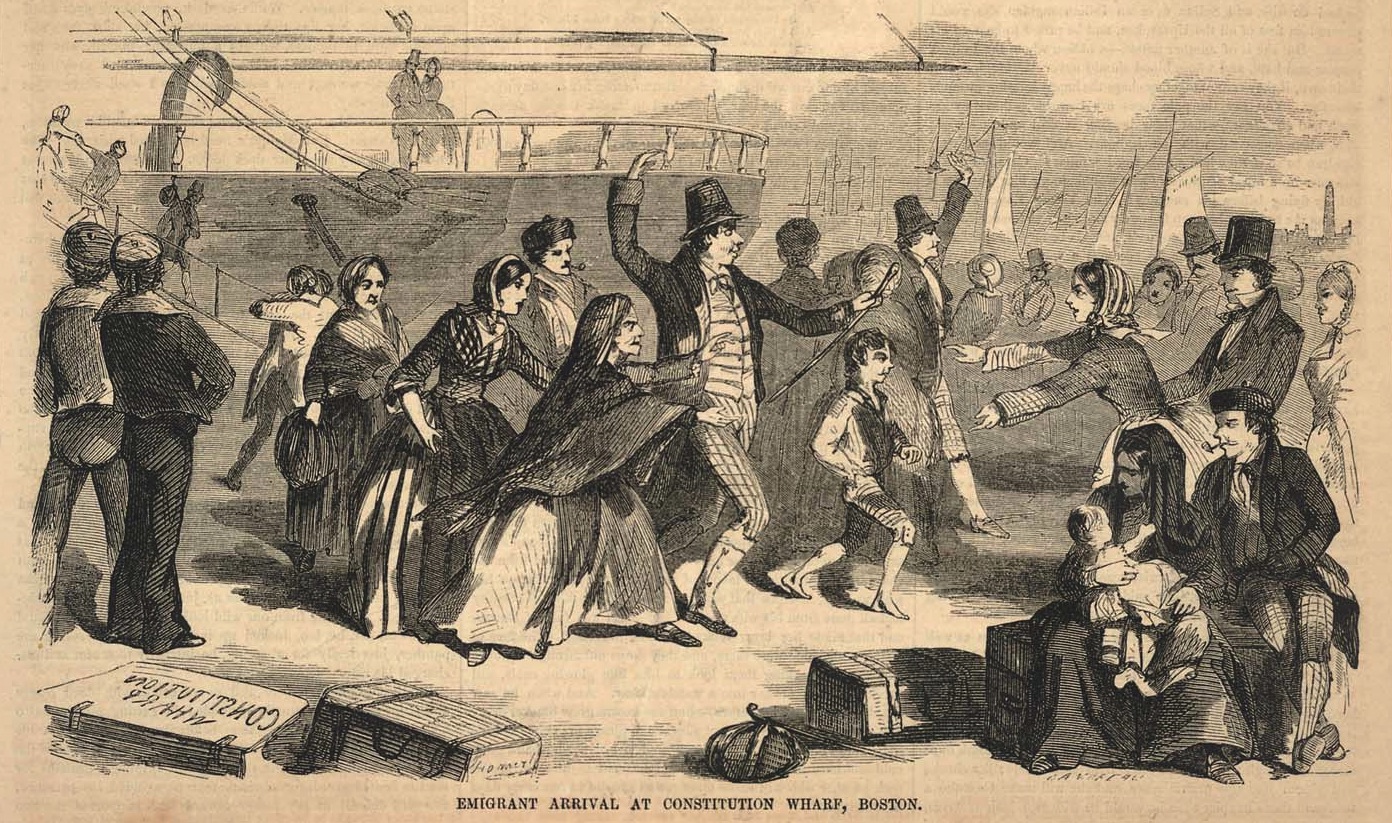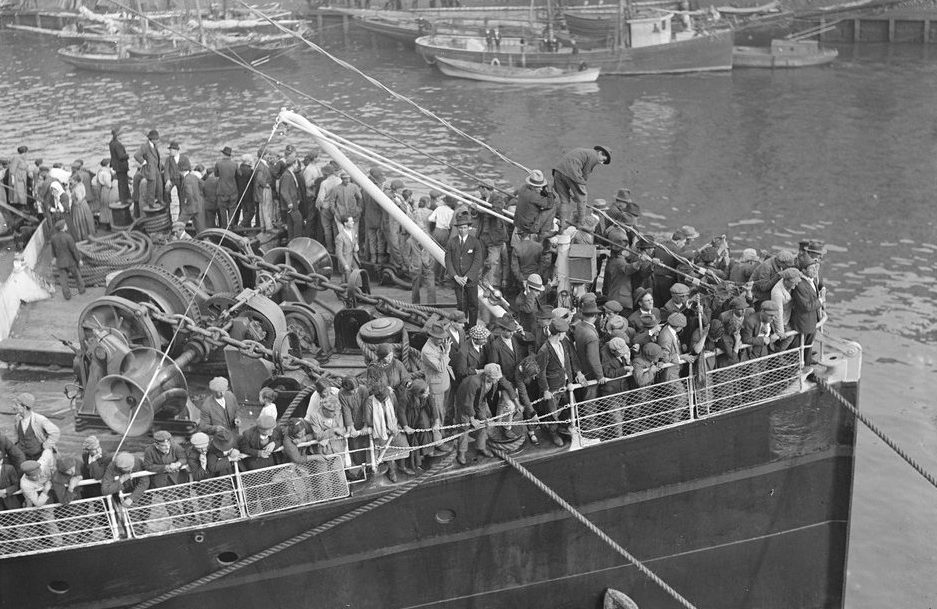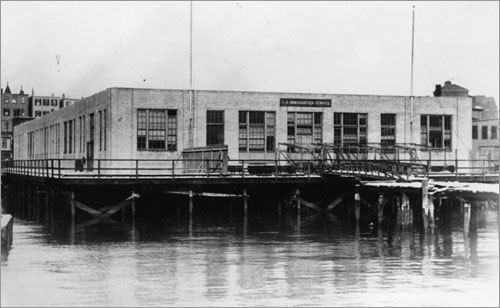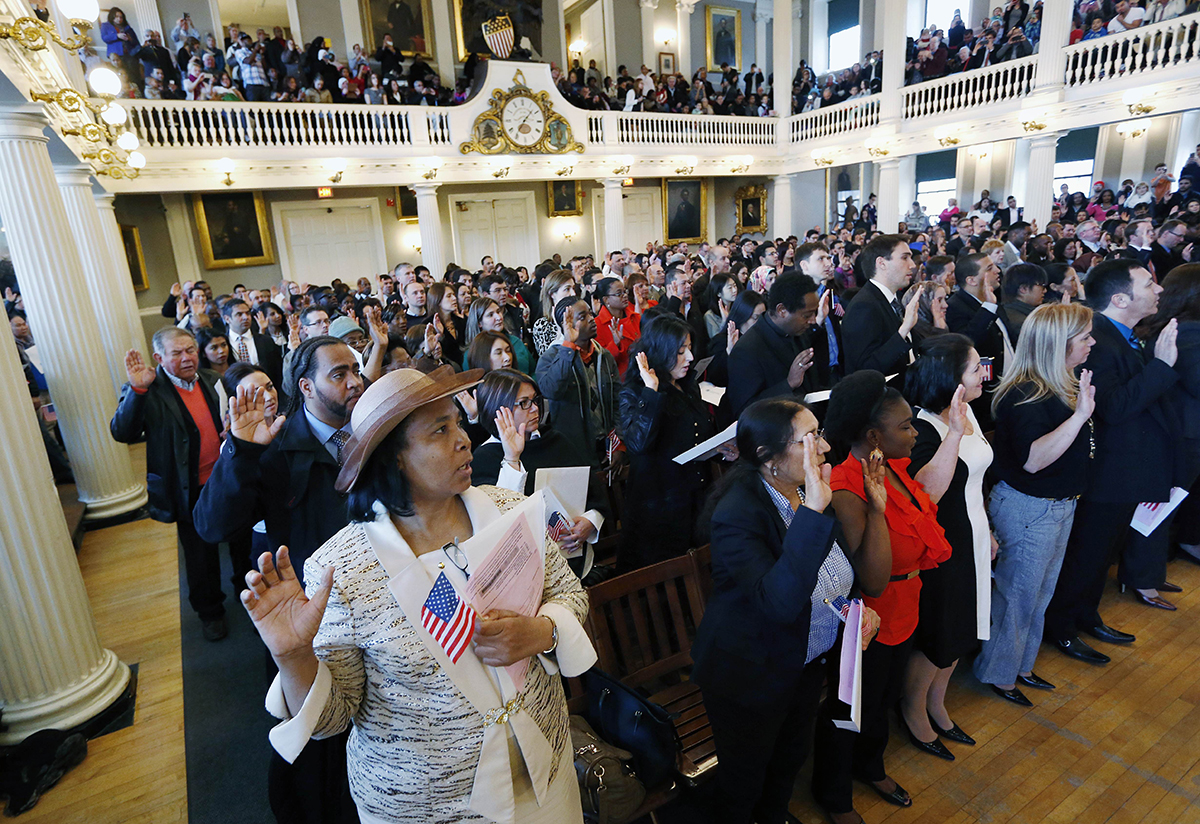Immigrants arriving at Constitution Wharf in Boston. From Ballou’s Pictorial, October 31, 1857.
During the nineteenth century, Boston evolved from a bustling port town to a booming industrial city. Through landfill and annexations, the city’s footprint grew dramatically, from 1.5 to more than 40 square miles, while its population increased more than eight fold from 1820-1880. As shoe and textile factories sprouted up across Massachusetts, railroad building accelerated, connecting Boston to towns across the region and markets further west. At the same time, the city’s burgeoning port and maritime commerce sent local traders and missionaries across the globe, fostering contacts abroad that migrants would follow back to Boston. By 1880, the Census counted more than 114,000 immigrants in the city—nearly a third of its population.
The Irish made up the majority of immigrants in this period, particularly during the famine years of the 1840s and 1850s when they comprised more than 90 percent of the city’s foreign-born residents. Germans, Canadians, and those from England and Scotland came in smaller numbers. Many newcomers initially settled in the North End and Fort Hill (near the present financial district), as older Yankee residents moved out. By mid century, however, Irish and other immigrants were fanning out to the South and West Ends and to nearby settlements in Charlestown, East Boston, Cambridge and Lynn.
For many new arrivals, Boston proved to be a temporary destination and jumping-off point for jobs in outlying mill towns or work building railroads, canals, and other construction projects. Within the Boston area, immigrant men worked as day laborers and skilled tradesmen, while women found work in domestic service and sewing. Immigrant mothers also worked in their own homes, taking in boarders and laundry to earn income for their families. During the Civil War, trans-Atlantic immigration was disrupted and continued to decline during the 1860s. It soon rebounded, but by the 1880s the sources of that migration began to shift. (Continue reading on Second Wave Immigration, 1880-1921)





